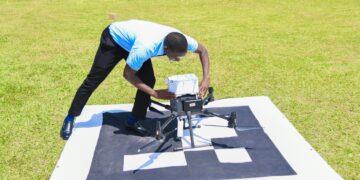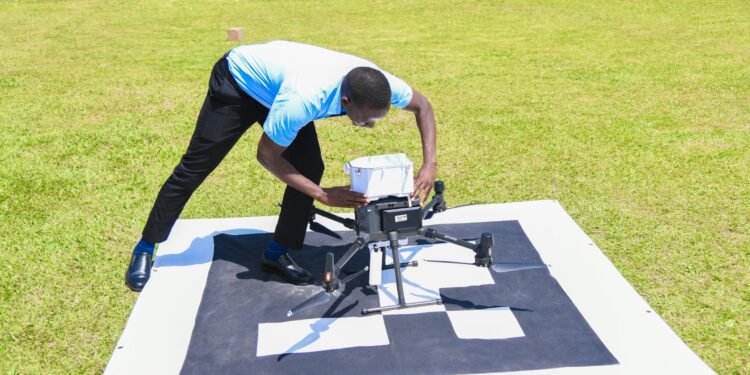Makerere University has unveiled progress from a transformative healthcare innovation project—the Medical Drone Programme—currently delivering antiretroviral medication and health supplies to Uganda’s most hard-to-reach communities.
During a press conference hosted in the University Council Room (Ivory Tower), Professor Buyinza Mukadasi, the Ag. Vice Chancellor of Makerere University, hailed the initiative as a beacon of how academic research can directly uplift communities and improve lives.
“We are proud to support this kind of research that not only advances knowledge but also drives tangible improvements in public health and safety,” said Prof. Buyinza. “The Medical Drone Programme reflects our commitment to impactful, people-centred innovation.”
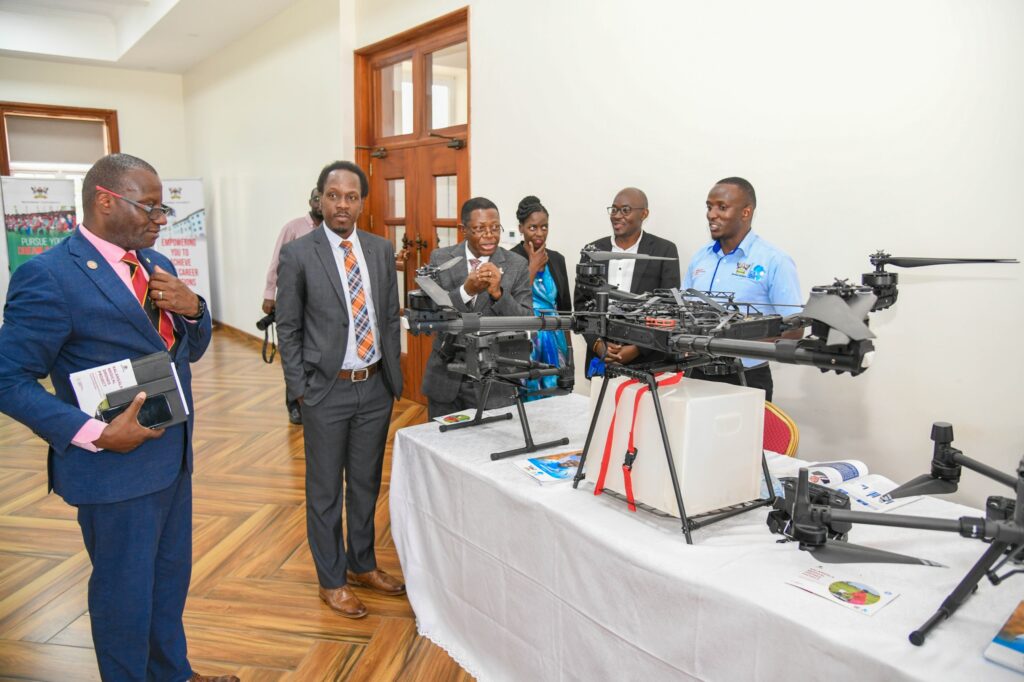
The Medical Drone Programme: A Vision Realised
The programme, spearheaded by the Infectious Diseases Institute (IDI), a centre of excellence at Makerere University, addresses one of the most persistent challenges in HIV care: how to deliver lifesaving treatment to isolated, vulnerable populations with limited access to health facilities.
According to Dr Andrew Kambugu, Executive Director of IDI and Chair of the Uganda Society for Health Scientists, the drone project emerged from the urgent need to reach neglected fishing communities on Lake Victoria’s islands—areas burdened by high HIV prevalence and logistical challenges.
“This is about leaving no one behind,” Dr Kambugu emphasized. “We’ve made progress in fighting HIV, but many island communities still face barriers that make timely access to treatment nearly impossible. That’s where drones come in.”

Three Phases of Innovation
Launched in 2019, the Medical Drone Programme is structured in three phases beginning with the Baseline Study (2019–2021): This initial phase focused on mapping the terrain, estimating population sizes, and installing weather monitoring infrastructure necessary for drone safety. Three weather stations were built in Kalangala and two more in the West Nile region. Land for the stations was voluntarily provided by residents—a strong indicator of community support.
The Pilot Delivery Phase saw the drones deployed to transport antiretroviral (ARV) drugs and medical samples across six landing sites on four islands. More than 500 flights were conducted, covering over 4,500 kilometres. In total, over 1,000 patients received medication through this method, saving lives and improving treatment adherence.
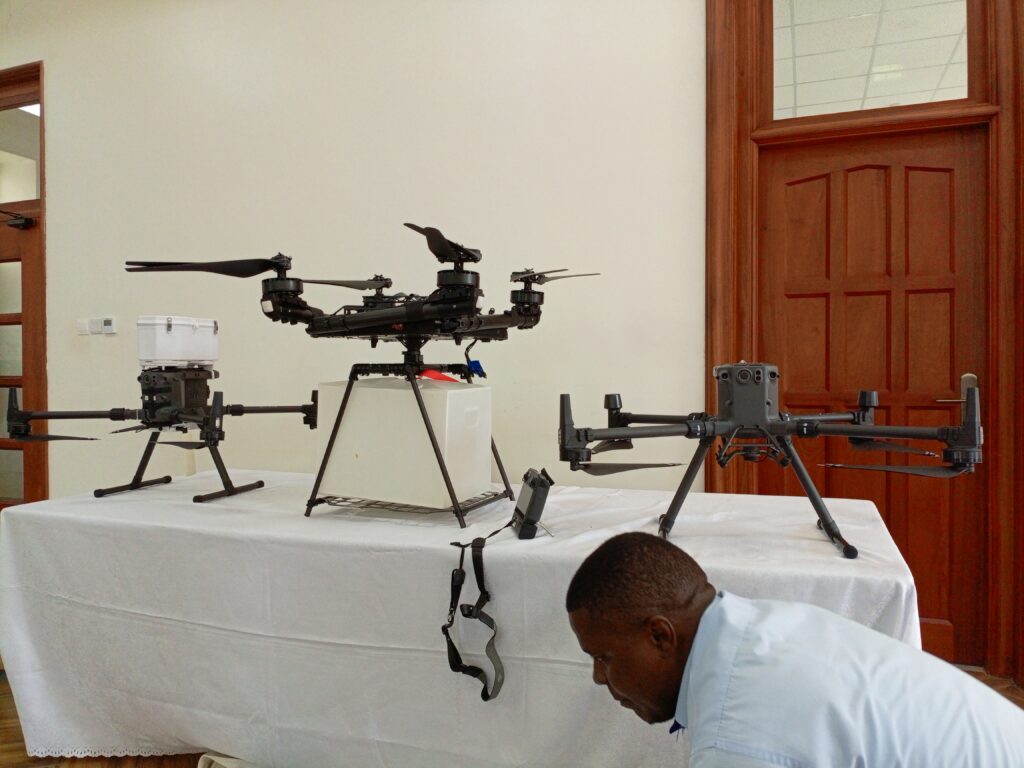
The Clinical Trial and Scale-Up (2025–2026), the ongoing third phase, began in March 2025, is a clinical trial evaluating not just logistics but also the clinical outcomes, cost-effectiveness, and scalability of drone-based delivery. Results from this phase—expected in September 2026—will inform national policy decisions on wider drone adoption.
Inside the Drone Operations
At the heart of the programme is cutting-edge drone technology, coordinated by Patrick Ssesaazi, the Implementation Lead Medical Drones at the Infectious Disease Institute under Makerere University.
“Early versions of the drones could carry only 2 kilograms. We are now expecting an advanced VTOL (Vertical Take-Off and Landing) drone capable of transporting 10 kilograms and flying up to 150 kilometres round-trip—a major boost for covering vast lake distances,” said Ssesaazi.
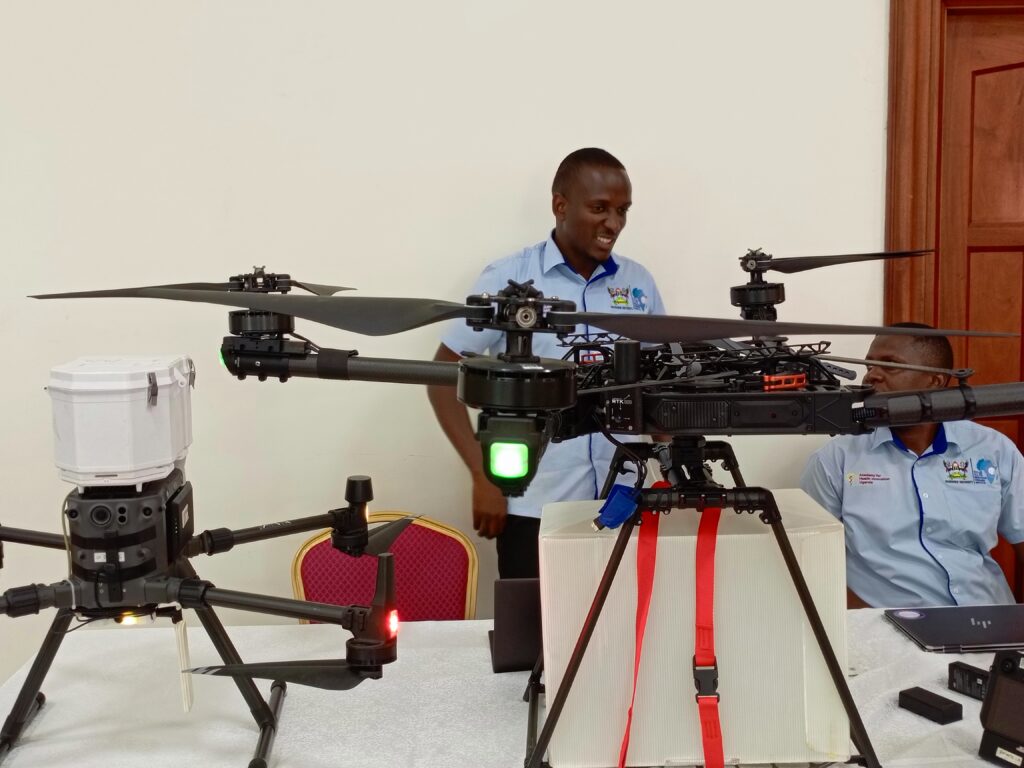
He said the drones are equipped with 13 cameras, 6D obstacle sensing, and are programmed to avoid birds and navigate tough terrain using GPS mapping. With multiple battery sets on hand, each drone can perform 20 to 30 flights daily, ensuring timely medicine delivery and sample pickup.
“Weather remains a challenge, especially during rain or when wind speeds exceed 15 meters per second. To mitigate this, we installed weather stations that feed real-time data into drone navigation software, enhancing safety and flight accuracy,” he explained.
Community Impact and Broader Implications
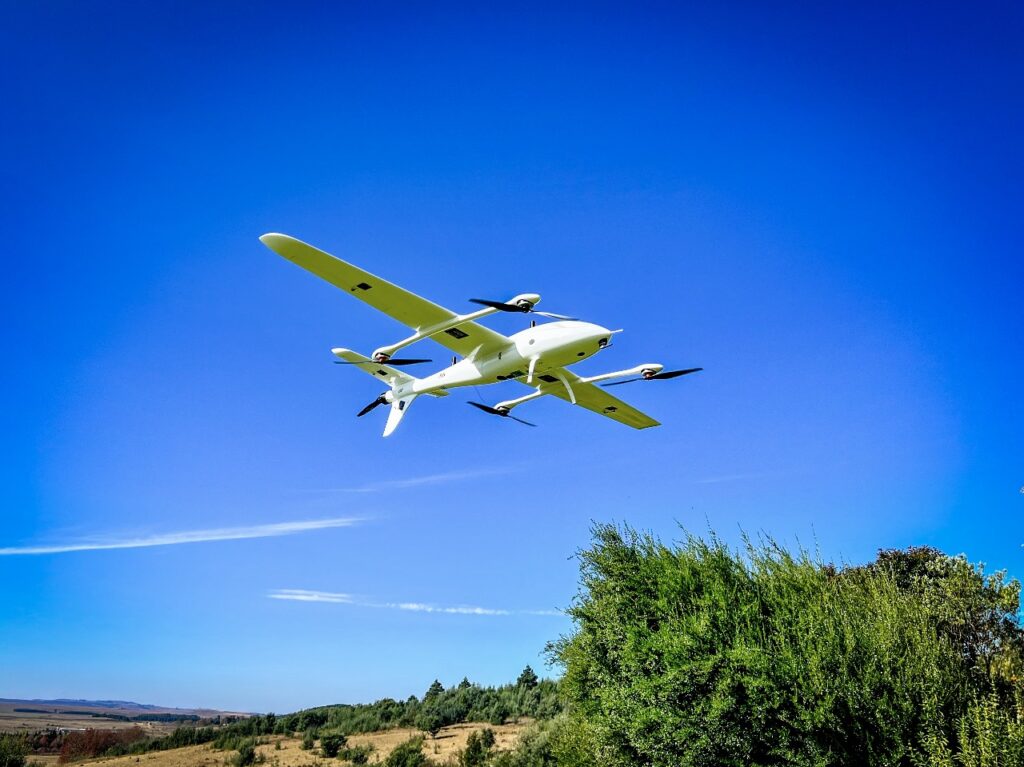
The drone project is already showing results in Kalangala’s Bufumira, Mazinga, Bubeke, and Kyamuswa sub-counties—areas previously underserved due to unreliable water transport and dangerous lake crossings.
Patients no longer need to spend money on risky boat rides or miss doses due to transport delays. As a result, treatment retention and viral load suppression are improving.
Beyond HIV care, drones have also been deployed for COVID-19 test sample transport, delivering over 1,100 samples, and aiding in weather data collection for national use.
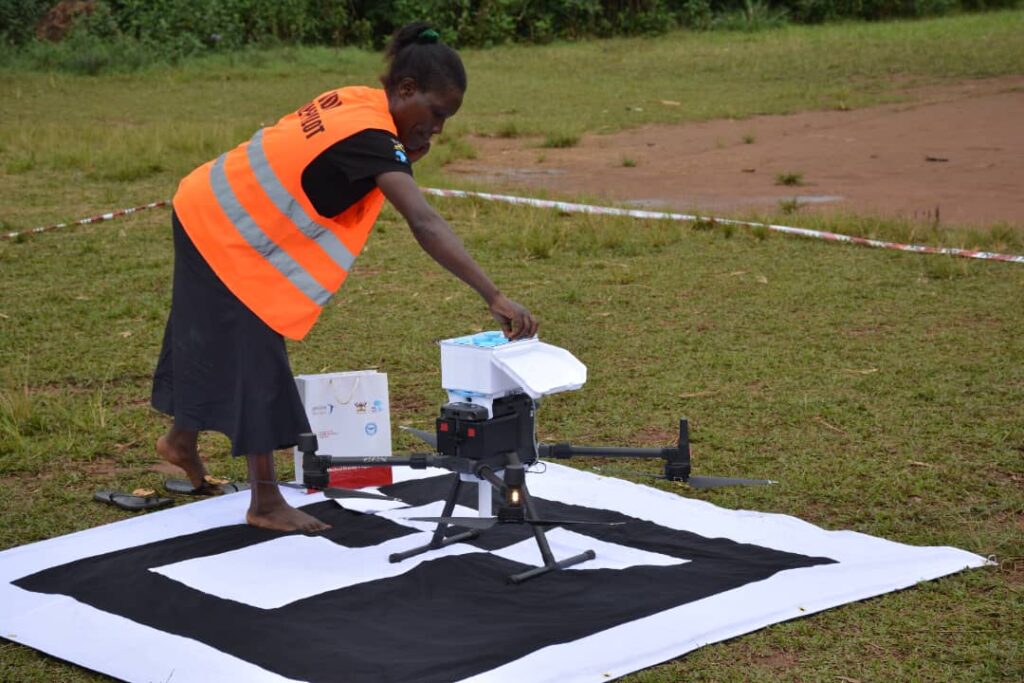
“We are reducing transport costs, preventing deaths, and building local capacity with nine trained drone pilots,” said Ssesaazi. “This is about technology that saves lives.”
Positioning Uganda as a Leader in Health Innovation
The success of the Medical Drone Programme positions Uganda as a regional pioneer in last-mile healthcare delivery. It also aligns with global movements to leverage AI, robotics, and automation for social good.
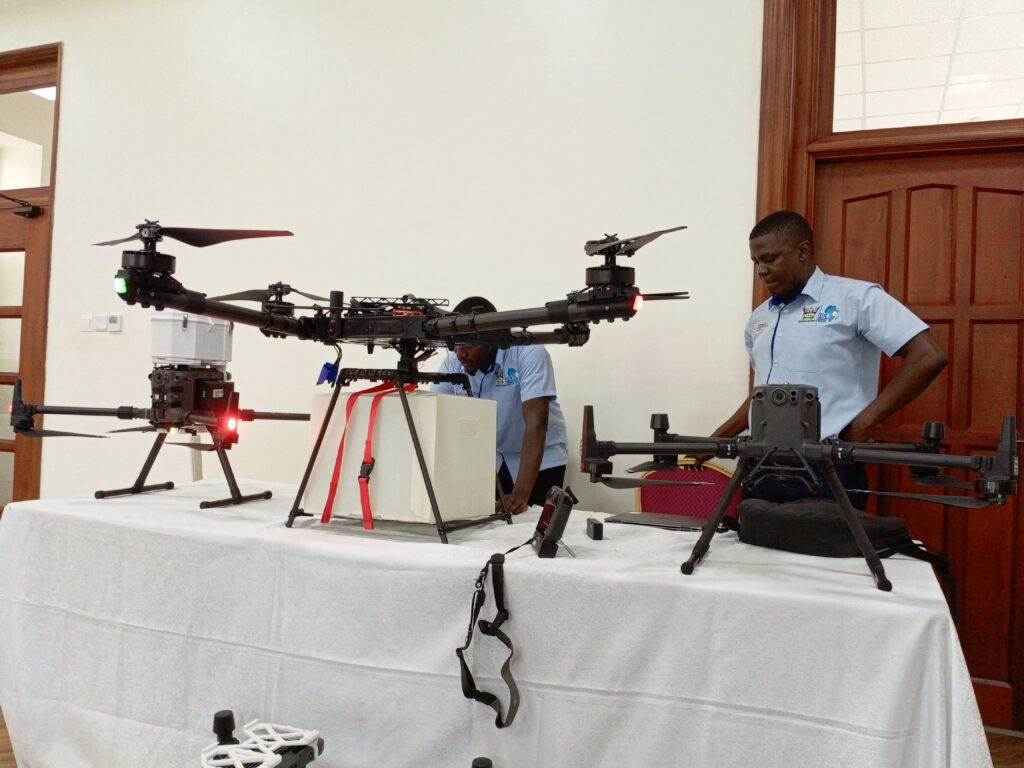
The programme is a joint effort involving local governments, the Ministry of Health, the Ministry of Science, and several international partners, including PEPFAR, Johns Hopkins University, and the United Nations Capital Development Fund.
A National Medical Drones Steering Committee oversees the initiative to ensure compliance, transparency, and potential integration into national health logistics.
Looking Ahead
As the clinical trial progresses, stakeholders are already looking toward replication in other districts with similar terrain challenges, such as Buvuma and Namayingo.
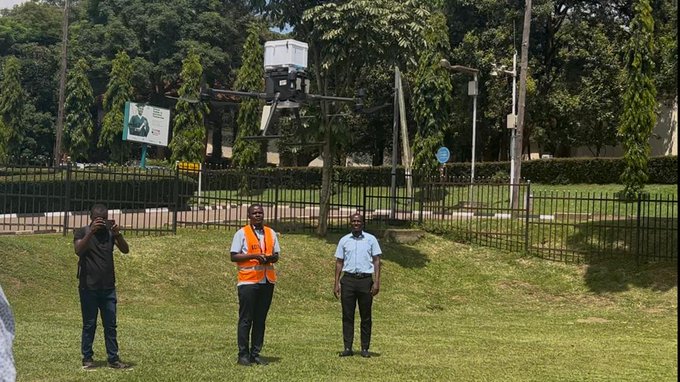
“If the data supports it—and all signs so far are encouraging—we will advocate for a national rollout,” said Dr Kambugu. “This is what it means to be an innovation-driven university and a health-conscious nation.”
In an era where access to healthcare can mean the difference between life and death, the IDI Medical Drone Programme stands as a testament to Uganda’s capacity for homegrown, tech-driven solutions.
As Prof. Buyinza put it, this is Makerere University “walking its talk”—delivering not just academic excellence, but real-world impact.
